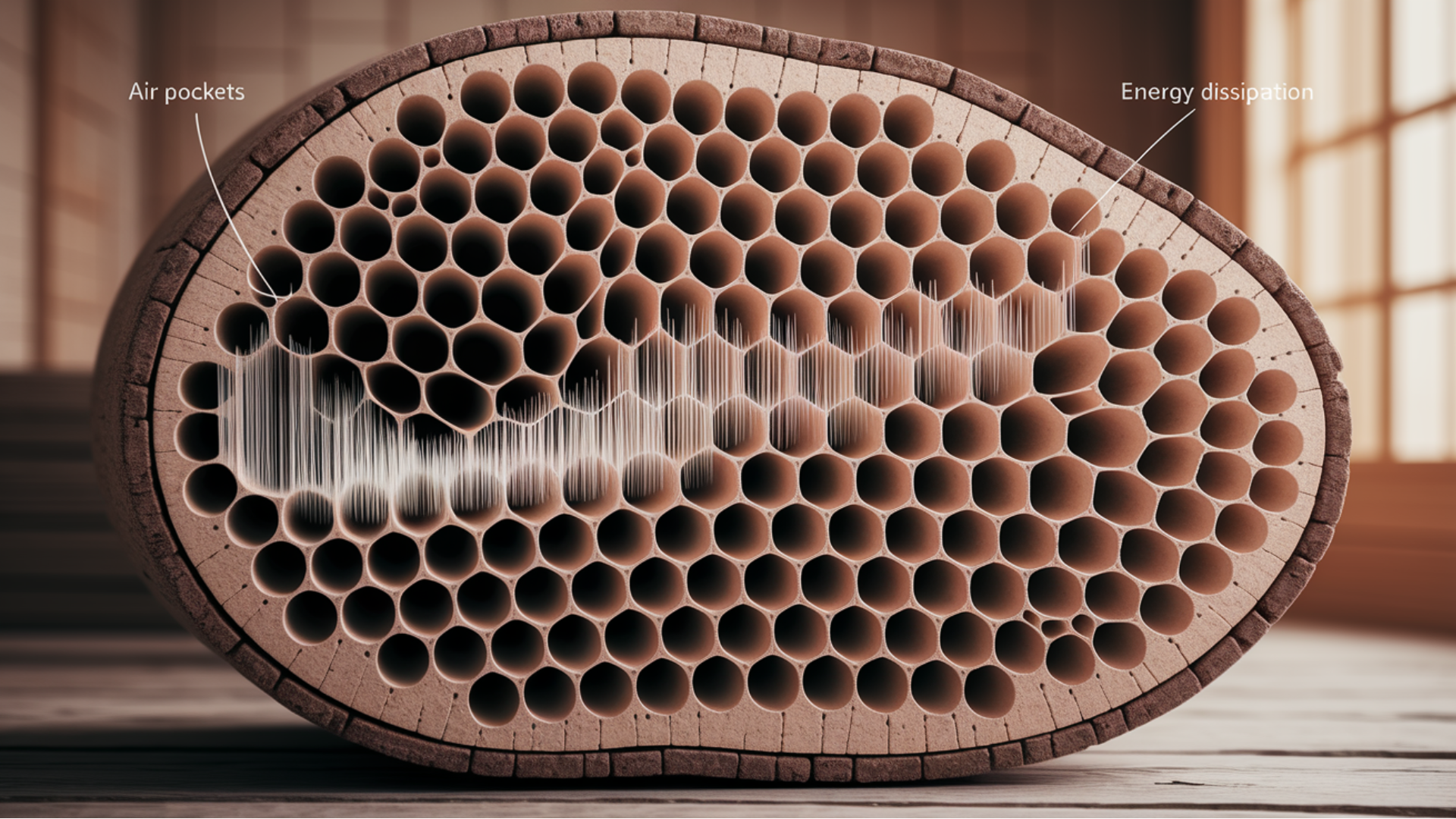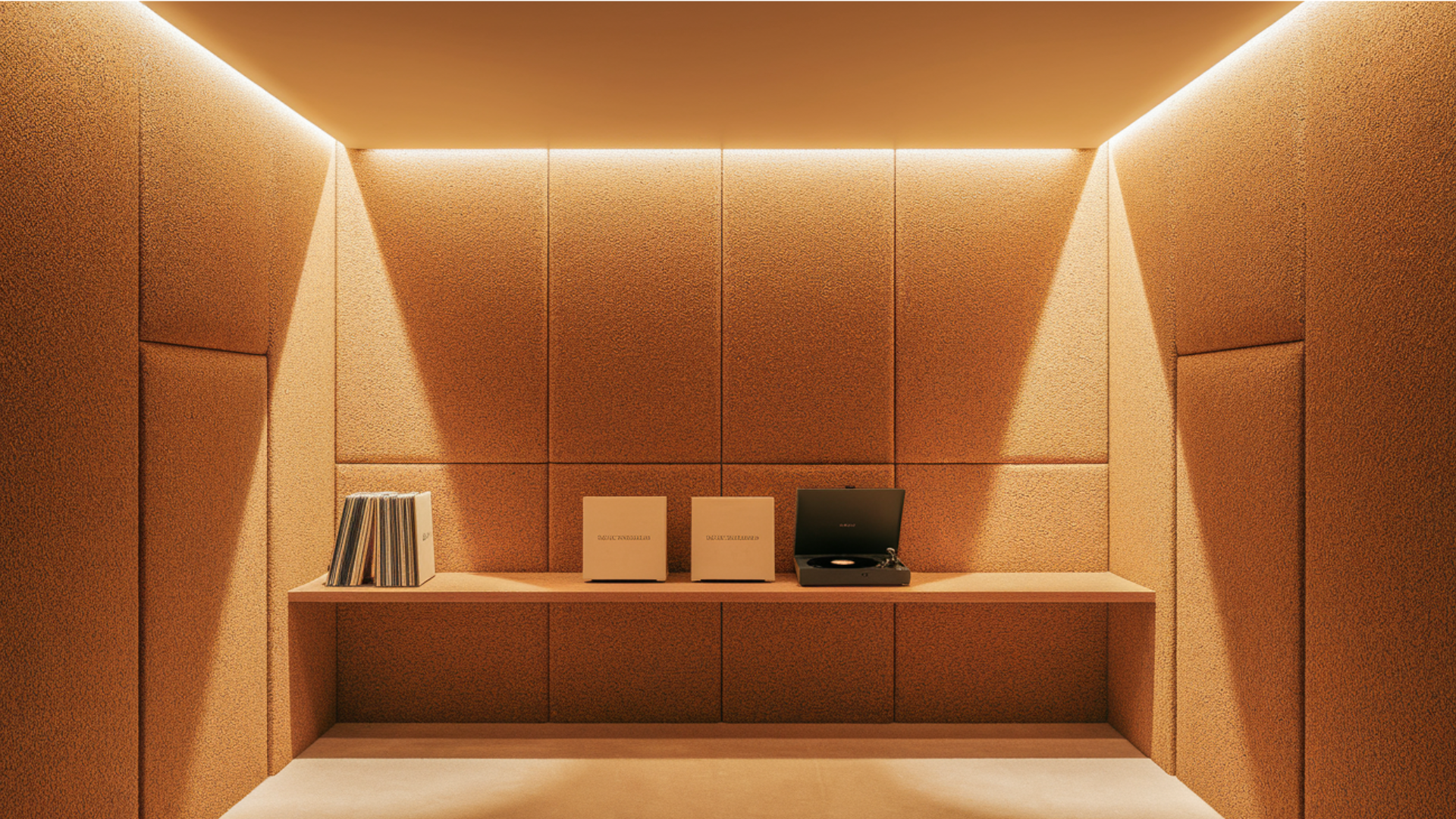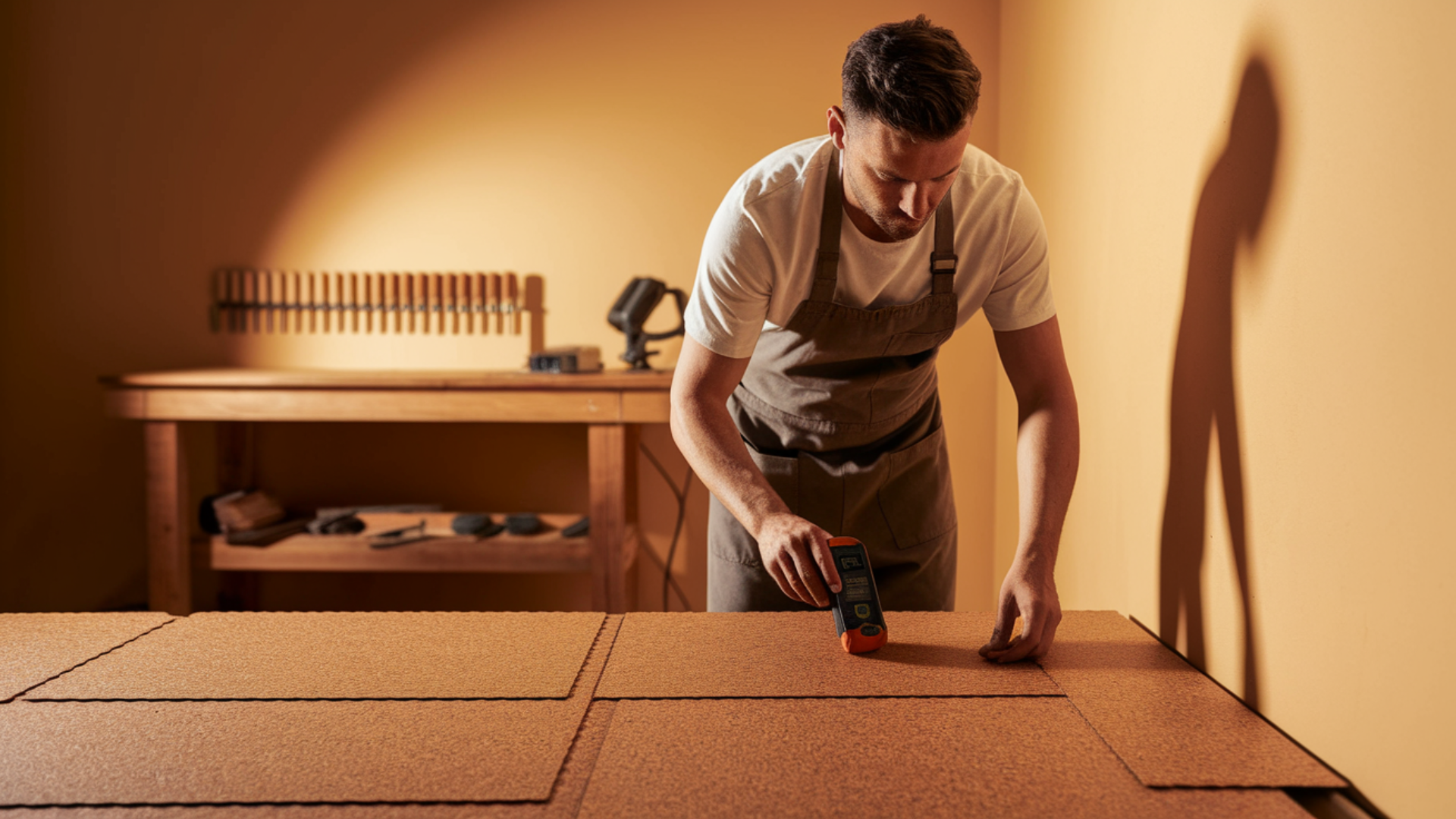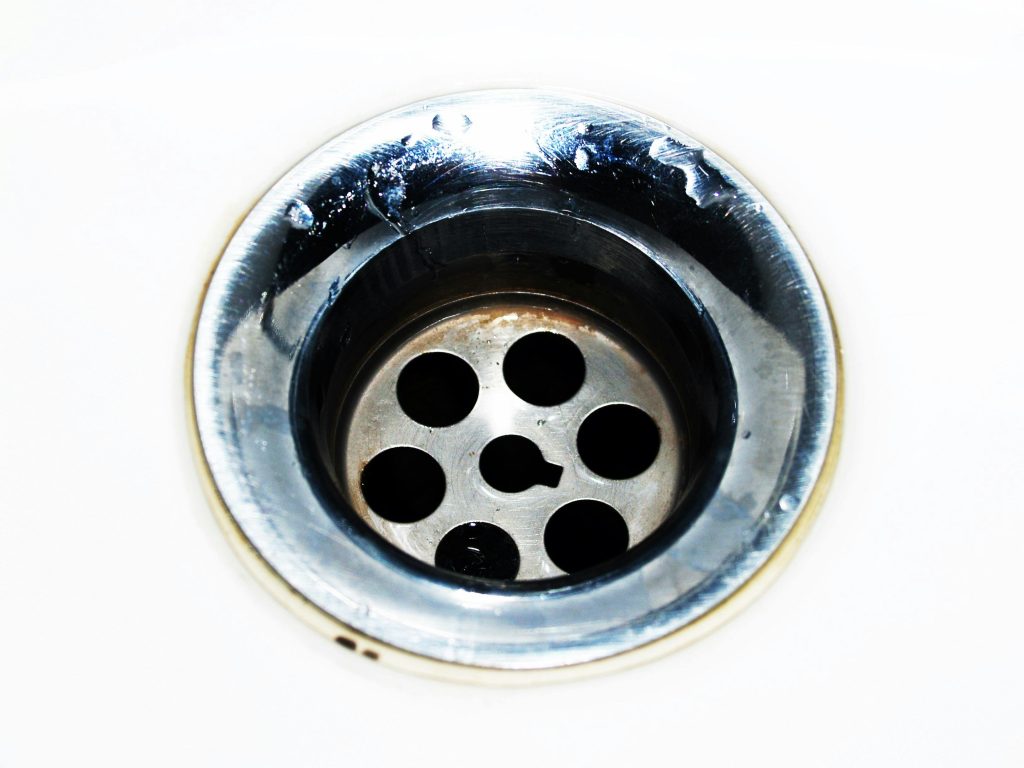Ever wonder why recording studios and cozy cafes feel so peaceful?
The secret might be hiding in plain sight—cork! This amazing natural material isn’t just for wine bottles anymore.
Cork walls and flooring are becoming the go-to choice for homeowners who want to kick noise to the curb.
Here’s a cool fact: NASA uses cork-based materials for spacecraft thermal protection.
Whether it’s your neighbor’s late-night TV marathons or street traffic that won’t quit, cork creates a sound barrier that actually works.
Ready to uncover how this eco-friendly superhero can transform your noisy space into a zen zone?
What’s the loudest noise in your home that drives you crazy?
Why Choose Cork for Soundproofing?
What makes cork the ultimate soundproofing champion? It’s all about those millions of tiny air pockets trapped inside!
Think of cork like nature’s bubble wrap – each cell acts like a mini sound absorber. Unlike synthetic materials that harm the environment, cork comes from tree bark that regrows every nine years without cutting down the tree.
Cork’s secret weapon is its impressive Noise Reduction Coefficient rating of 0.3 to 0.7, which means it soaks up to 30- 70% of sound waves that hit it.
Whether it blocks footsteps or absorbs echo, cork’s cellular structure makes it incredibly effective at trapping airborne sounds.
Ever notice how wine cellars are so incredibly quiet? Now you know why!
The Science Behind Cork’s Soundproofing Ability

Ever wonder how cork actually stops sound in its tracks? It’s pure science magic! Cork is made up of millions of microscopic air-filled cells that work like tiny sound traps.
When noise hits cork, those sound waves get lost in a maze of air pockets, bouncing around until they lose their energy and fade away.
Think of it like throwing a ball into a room full of pillows – the ball just can’t bounce back!
This natural honeycomb structure makes cork incredibly lightweight yet super effective at absorbing everything from footsteps to music. It’s nature’s acoustic engineering at work!
Have you ever noticed how quiet it gets when you step into a cork-lined room?
Where to Use Cork for Maximum Soundproofing

Cork isn’t picky about where it works its magic – from walls that block neighbor noise to floors that muffle footsteps, this versatile material adapts to any space that needs serious sound control.
The best high-quality cork-based construction material that offers premium solutions for all your soundproofing needs is Portuguese Treasures.
Walls
Cork walls are game-changers for recording studios, home theaters, and nurseries where peace is essential. In apartments, cork wall panels block neighbor conversations and TV sounds.
Commercial spaces use cork to create quiet meeting rooms and productive work areas.
The thick, spongy texture absorbs sound waves before they can travel through walls, making any room instantly more private and peaceful.
Floors
Cork flooring and underlayment work like magic carpets for sound control. They absorb impact noise from footsteps, dropped items, and furniture movement – perfect for upstairs apartments and busy offices.
Cork tiles cushion every step while blocking sound from traveling to rooms below, creating quieter living and working environments that everyone appreciates.
Which room in your home could use a serious sound makeover?
Cork Vs Other Materials
Choosing the right material for soundproofing depends on multiple factors like absorption, durability, and environmental impact.
Below is a comparison between cork and other common materials, including foam, fiberglass, mineral wool, and MLV.
|
Aspect |
Cork |
Other Materials (Foam, Fiberglass, Mineral Wool) |
MLV (Mass Loaded Vinyl) |
|---|---|---|---|
|
Sound Absorption |
Good for mid-to-high frequencies; reduces echo |
Foam: High-frequency only Fiberglass/Wool: Excellent full-range absorption |
Poor absorption; not intended for acoustic absorption |
|
Sound Blocking |
Limited; not ideal for stopping transmitted noise |
Foam: Not sustainable Fiberglass: Energy-intensive Moisture Wool: Water-resistant |
Excellent; designed to block airborne sound across all frequencies |
|
Sustainability |
Highly sustainable; renewable, recyclable, biodegradable |
Foam: Not sustainable Fiberglass: Energy-intensive Wool: Natural, but processing varies |
Unsustainable; made from PVC or other dense synthetics |
|
Moisture Resistance |
Naturally resists mold, mildew, and moisture |
Foam: Absorbs moisture Fiberglass: Degrades with moisture Wool: Water-resistant |
Fully waterproof; suitable for high-moisture environments |
|
Durability |
Long-lasting, resistant to rot and environmental wea |
Foam: Breaks down over time Fiberglass: Can compress Wool: Durable |
Highly durable and resilient under heavy use |
While cork offers a natural and effective option for moderate acoustic needs, other materials like MLV and mineral wool excel in heavy-duty soundproofing but may compromise on sustainability or ease of use
Installation Tips for Optimal Performance

Want your cork soundproofing to work like a dream? The secret isn’t just in the material – it’s in the installation! Follow these pro tips to ensure your cork delivers maximum noise-blocking power from day one.
Pre-Installation Prep
Before installing cork, check that walls are flat and floors are level – bumps create gaps that let sound sneak through.
Test moisture levels with a simple meter since excess humidity can damage cork over time. Fix any squeaky subfloors or loose boards first, as these issues will only get worse under cork and reduce its soundproofing effectiveness.
Installation Techniques
Floating floor systems let cork expand naturally while creating excellent sound barriers. Adhesive-backed tiles stick directly to clean surfaces for quick wall and floor applications.
Layer cork underlayment beneath regular flooring for extra sound absorption. This double-barrier approach blocks both impact noise and airborne sounds.
For best long-term performance, always leave small expansion gaps around room edges. Have you ever tackled a DIY flooring project before, or would you call in the pros?
How to Take Advantage of Cork Soundproofing
Taking advantage of cork soundproofing is easier than you think!
Start by identifying your noisiest problem areas—are they footsteps from upstairs, voices through thin walls, or echo in large rooms?
Cork works best when you target these specific trouble spots first. Consider cork wall panels behind your TV area or bedroom walls shared with neighbors.
For floors, cork underlayment under existing flooring gives instant results. Mix and match cork solutions based on your budget and needs.
The key is to start somewhere and build your quiet zone room by room until your entire home becomes your sanctuary.
What’s the first room you’d love to make whisper-quiet?
Potential Drawbacks and Considerations
Let’s be honest – cork isn’t a magic wand that solves every problem!
While cork is incredibly durable and can last decades with proper care, it can eventually show scratches and dents from heavy furniture or pet claws.
The good news? Most minor damage can be easily repaired with simple cork fillers.
Cost-wise, cork does require a bigger upfront investment than basic materials, but think of it as buying quality once instead of replacing cheap stuff multiple times.
When you factor in cork’s 25-30 year lifespan, energy savings from insulation, and the peace of mind from better soundproofing, most homeowners find the investment pays for itself through improved comfort and home value.
Would you rather pay more upfront for something that lasts, or keep replacing cheaper options every few years?
Conclusion
So there you have it – cork isn’t just a wine bottle stopper, it’s your ticket to a quieter, more peaceful home!
From blocking annoying neighbor noise to creating cozy spaces where you can actually think, cork walls and flooring deliver real results that you’ll notice from day one.
Sure, it costs more upfront, but when you’re enjoying years of blissful quiet while helping the environment, that investment feels pretty smart.
If you’re building new or upgrading existing spaces, cork adapts to your needs and budget. The science is solid, the benefits are real, and the peace of mind is priceless.
Ready to silence the chaos and embrace the calm? Your ears will thank you!
Have you decided which room deserves the cork treatment first?
Leave a comment and tell us about your biggest noise nightmare. We’d love to help you find the perfect cork solution!











